It’s half time of my trip. Spending a night in the Onsen town Kusatsu in Gunma prefecture I had a relaxing stay with friends from Tokyo. The water from the natural hot spring is used in many ways here besides for bathing.
Landing in Haneda
The night in the first cabin hotel passed without disturbances. A silent alarm woke me up, then I freshened up in the shared hot bath. Even capsule hotels often have a communal bath, however limited to male customers in the majority of times. Two cream pan from Sapporo served as a light breakfast for this day.
At 8 in the morning I left the airport with the fully autonomous Monorail train to arrive at Hamamatsucho station on the Yamanote line 20 minutes later. Another fifteen minutes later I arrived at Ueno station where I bought the train ticket to Kusatsu, my next destination.
The first express train
This is my eighth day in Japan and only today I take the first long-distance train. Usually, visitors would have their Japan Rail Pass ready on the first day and explore the sights outside Tokyo, but with this itinerary I could make use of planes and buses so far.
At Ueno station I confirmed the location of the platform and bought a eki-ben for the ride. The limited express Kusatsu was waiting on the platform with passengers at the head photographing themselves with the train, a common sight with the more individualized trains. As you may know already, every train line has a different appearance and a special name, very different from Germany and Switzerland.
The reserved seat section was completely booked out when I asked on the same day, so I hoped to find a seat in one of the unreserved cars. When not travelling with a Rail Pass, it’s important to pay attention to the additional fares that are added when taking express trains and reserving seats.
At one moment during the ride the earthquake warning system activated all the cell phones in the Kanto and Tohoku area to warn us from an incoming earthquake that was detected off the coast of Ibaraki prefecture. The loud and high-pitched alarm itself startled me. Fortunately, there was no detectable shaking, neither here nor in Tokyo as I read on Twitter. Later the explanation was released, that two weak seismic activities were detected at the same time leading to activation of the warning system.
A few minutes later everything returned to its normal state. Feeling hungry I opened the sushi eki-ben which contained snapper (tai), salmon and yuzu. The individual pieces were wrapped into leaves which gave a pleasant presentation. Each piece tasted good and especially the snapper was heavenly.
Two hours from Ueno we arrived at the final station, Naganohara-Kusatsuguchi. From here a bus covered the last part of the journey. Here I met two friends from Tokyo, the same I went to Comiket with. During the next half hour the scenery changed into a snowy mountain landscape as we approached Kusatsu.
The sulphurous hot spring town
The town is rather compact and easy to navigate, thanks to its central landmark, the Yubatake. When the sulphur-rich hot water reaches the surface, it has a temperature of 80 to 90 °C. Therefore, the water is directed over wooden conduits before it is transferred to the several baths and ryokans. Due to the sulfur-rich composition of the water, a characteristic scent of sulphur fills the whole town. Actually, I did not find it unpleasant or overwhelming, but this might be due to my regular exposure to sulphur containing chemicals.
In the town are many free foot baths everybody can use.
We reserved a room in the Ichii ryokan, situated directly in front of the Yubatake. In the lobby Pepper invited us to a chat.
Three young women dressed in yutakas greeted as and escorted us to our room in the seventh floor. When we arrived, even my Japanese companions were surprised by the sheer luxury we were presented.
The Japanese-style tatami room easily fitted six people, even though we reserved it for three. The interior was pleasing and the view outside gorgeous. At the table we were introduced to the amenities and services and informed about dinner time. Lastly, we were served green tea and a sweet.
We changed into yukatas and getas, and explored the town. Instead of one filling meal we tried many small snacks produced in Kusatsu. To list some of them, we had age-manju (deep fried manju filled with anko paste), yakitori, soft senbei, steamed manju and an onsen egg.
The last two were made with the help of the water from the hot spring. Just immersing the eggs in the water is enough to half-boil them. The staff of the manju store gave out samples to the passing people and invited them in with a cup of green tea. The freshly steamed buns were so hot inside, I needed to be careful not burn myself. The funny thing was that every time we passed the store, they gave us another sample and were quite persistent about us taking another. Even though we bought some manju as a gift on the first visit, they supplied us with manju every time we passed by, making it six times in total. We soon called this token of hospitality mugen manju – a supply of endless manju.
Yumomi is a traditional ritual in Kusatsu that reaches far back. Since the water exits the springs at 94 °C it needs to be cooled in order to allow bathing in it. At the ceremony traditionally dressed women use large wooden paddles to shake up the water in sync, creating a lot of steam, while singing folk songs. This way the temperature can be lowered without diluting it with cold water.
The ceremony takes place multiple times a day and tickets need to be purchased in advance. It is important to line up early to get a spot, as it fills up quickly.
Next, we walked through the city to the West to reach the Sainokawara Park leading up to the Sainokawara open air bath. Following the course of the steaming river we walked through the illuminated park. The scenery was indescribably beautiful, so I like to show you pictures instead.
The open air bath had a enormous pool-sized bath under the sky, fitting 100 people of each gender.
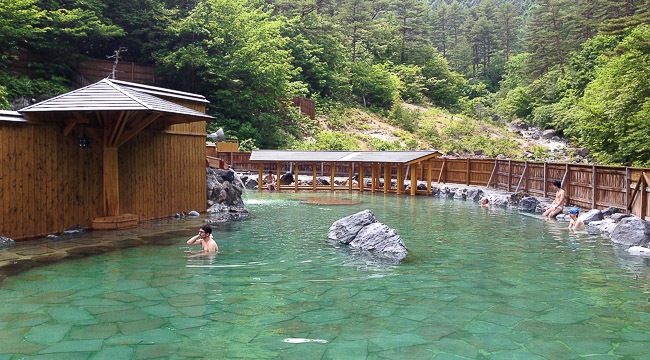
Photo by Japan Guide
The water was very hot but eventually I could sink into the steaming water. While very relaxing, I had to cool off every few minutes. Since dinner came up, we left the Onsen after half an hour and returned to our ryokan.
At the restaurant we were greeted with the first course of an exquisite course menu that included ingredients from Gunma prefecture. First we had some appetizers, followed by a nabe hot pot and a plate of sashimi. Our main dish course was Wagyu steak, after which we were served a udon soup, rice and a miso soup. Finally, there was a desert course. Every dish tasted excellent and was arranged in a pleasant way. The dining experience is a great part of the ryokan experience I think.
After this filling meal we took a stroll through the city one more time. Compared to before it was even colder, and the yukata did not keep in the warmth that well.
Now was the best time to test the Onsen in our ryokan. The two baths, one of which was outside, were similarly hot as Sainokawara Onsen and extremely relaxing. A sign informed of the mineralization and other properties of the water. The water in our baths had a temperature of 43 °C with a pH of 1.5 (very acidic) and high content in sodium, aluminium and sulfate ions. We were warned not to bring metallic jewelry into the bath as it would corrode.
When we returned to our room we found our futons already prepared for us. Sleeping like this is a welcome change to a mattress bed.
The next day I will leave Kusatsu and arrive at Nagano.
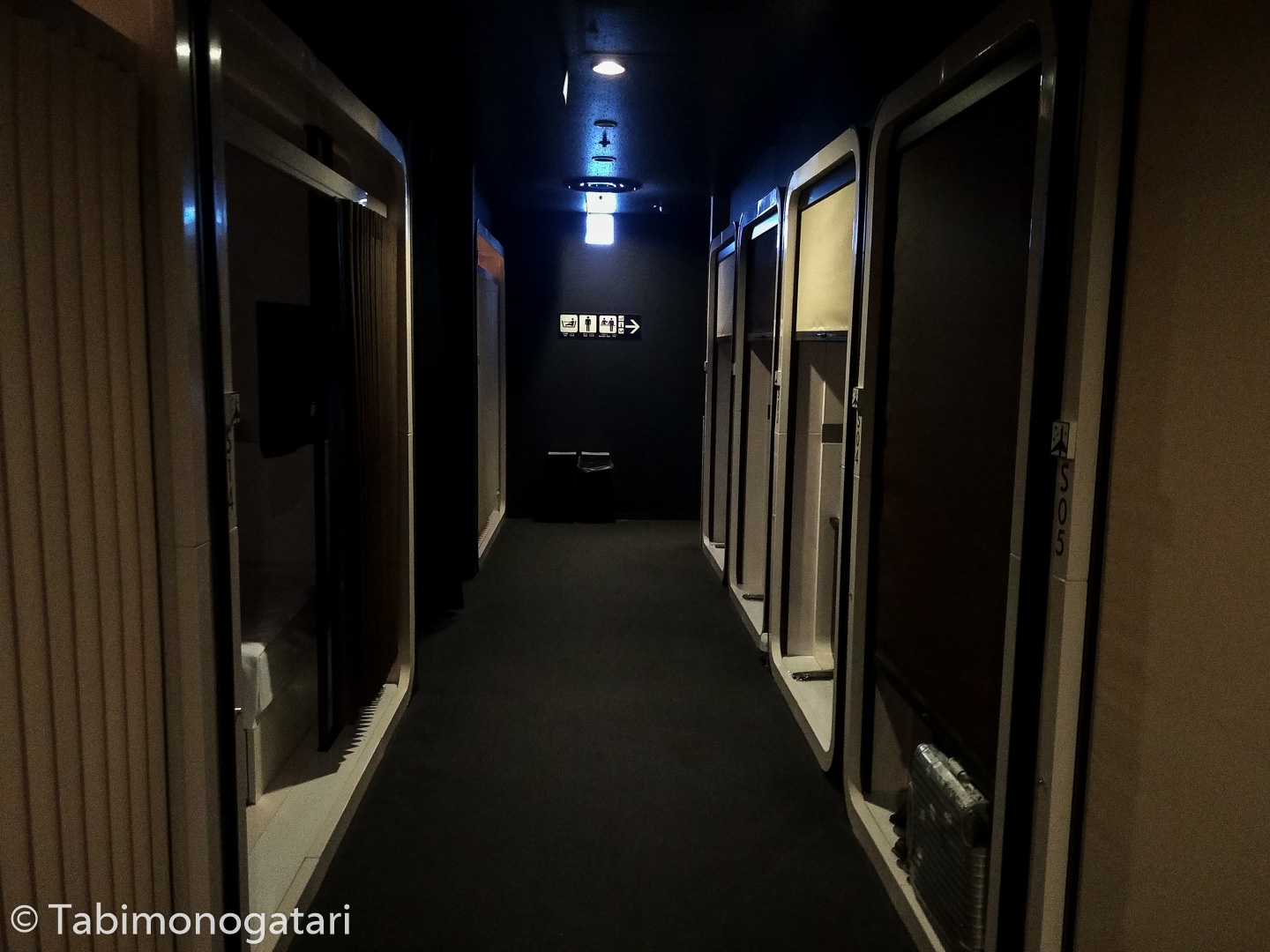
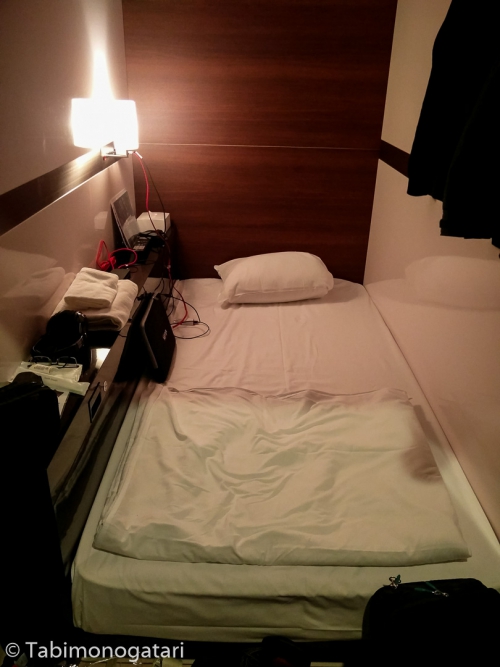
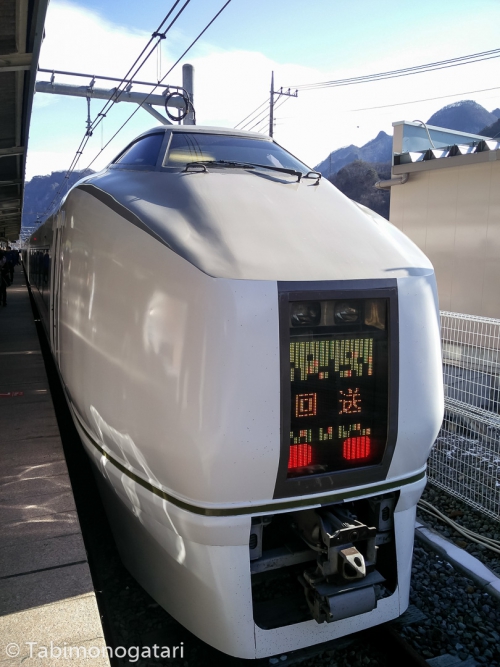
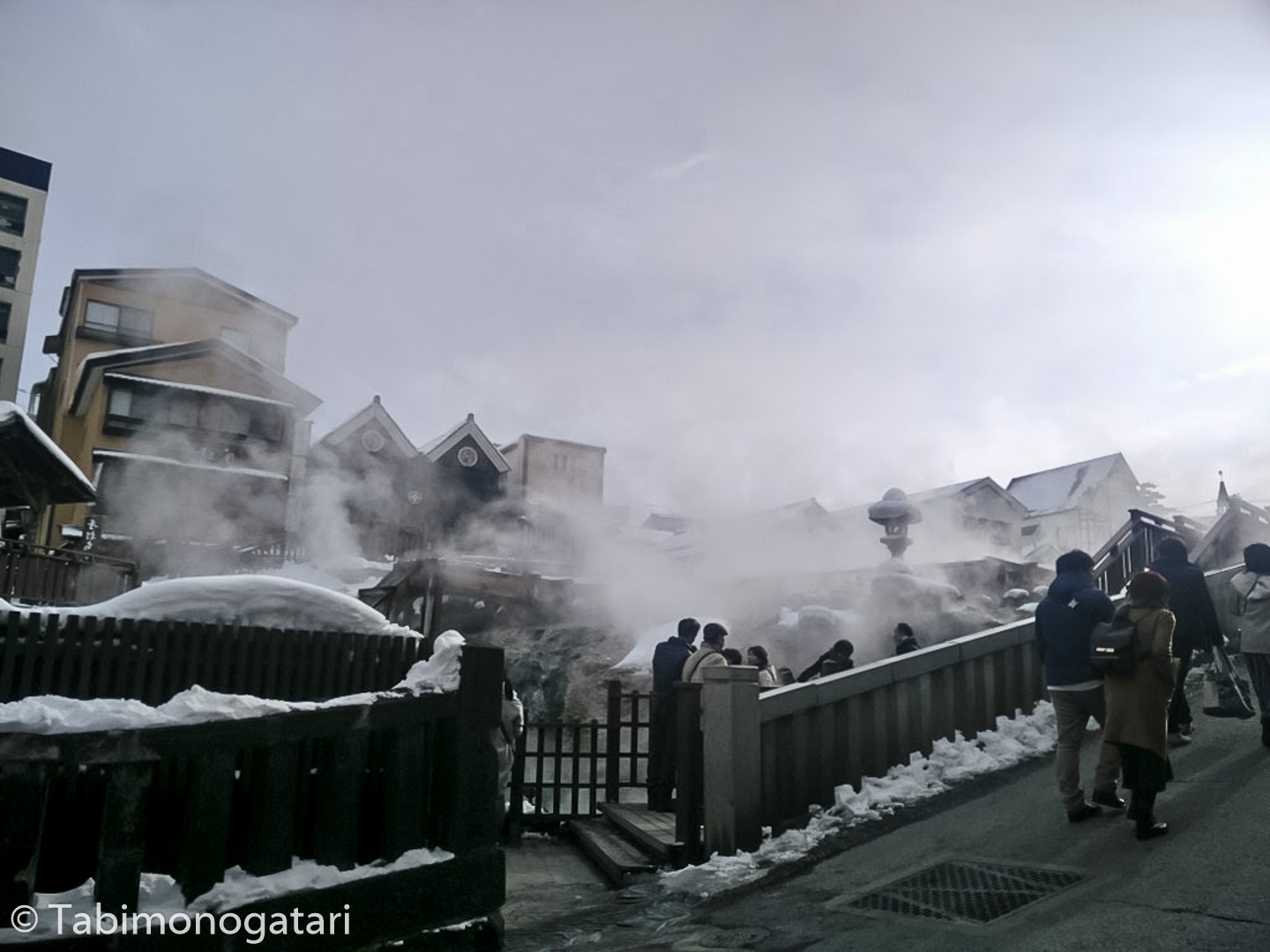
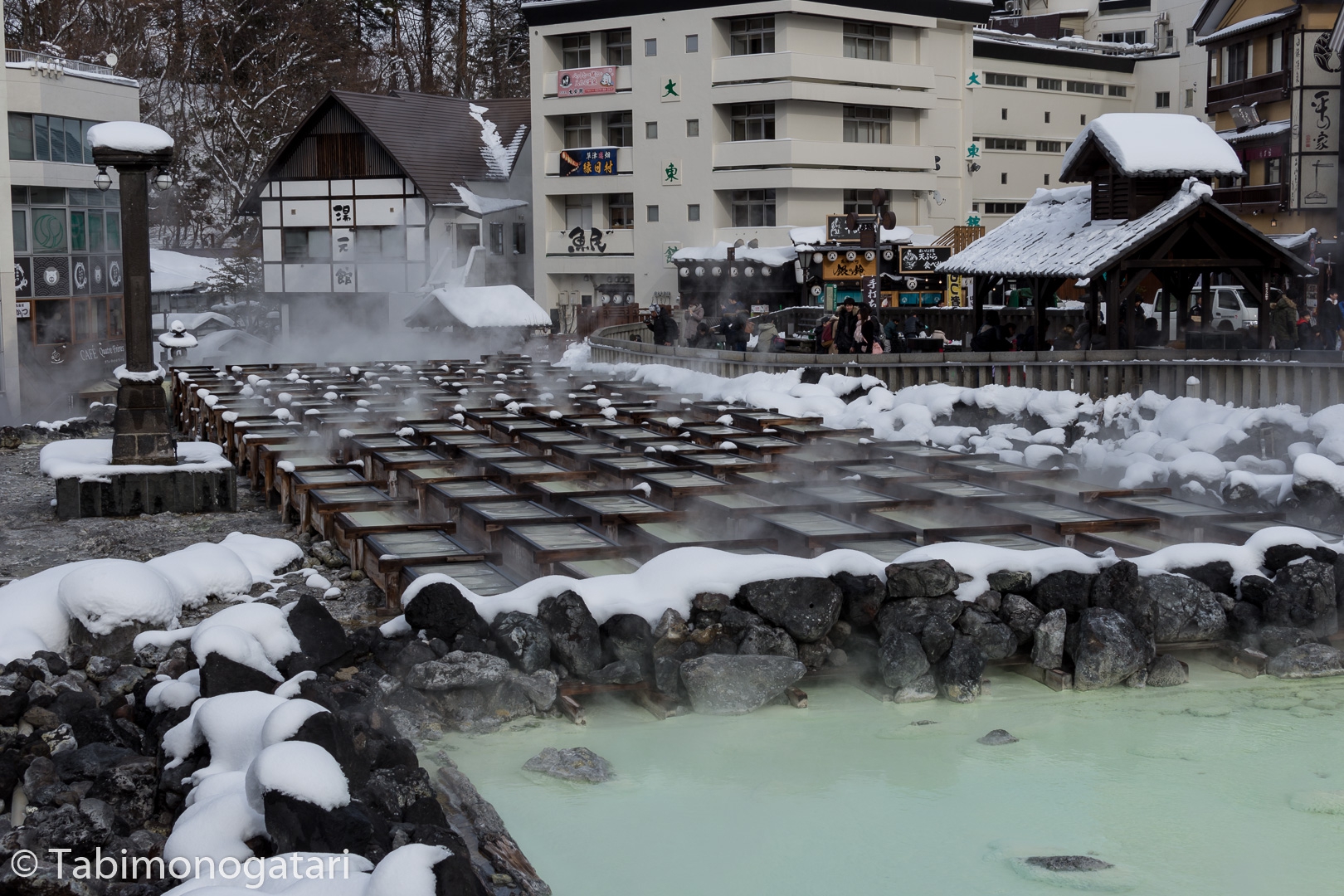
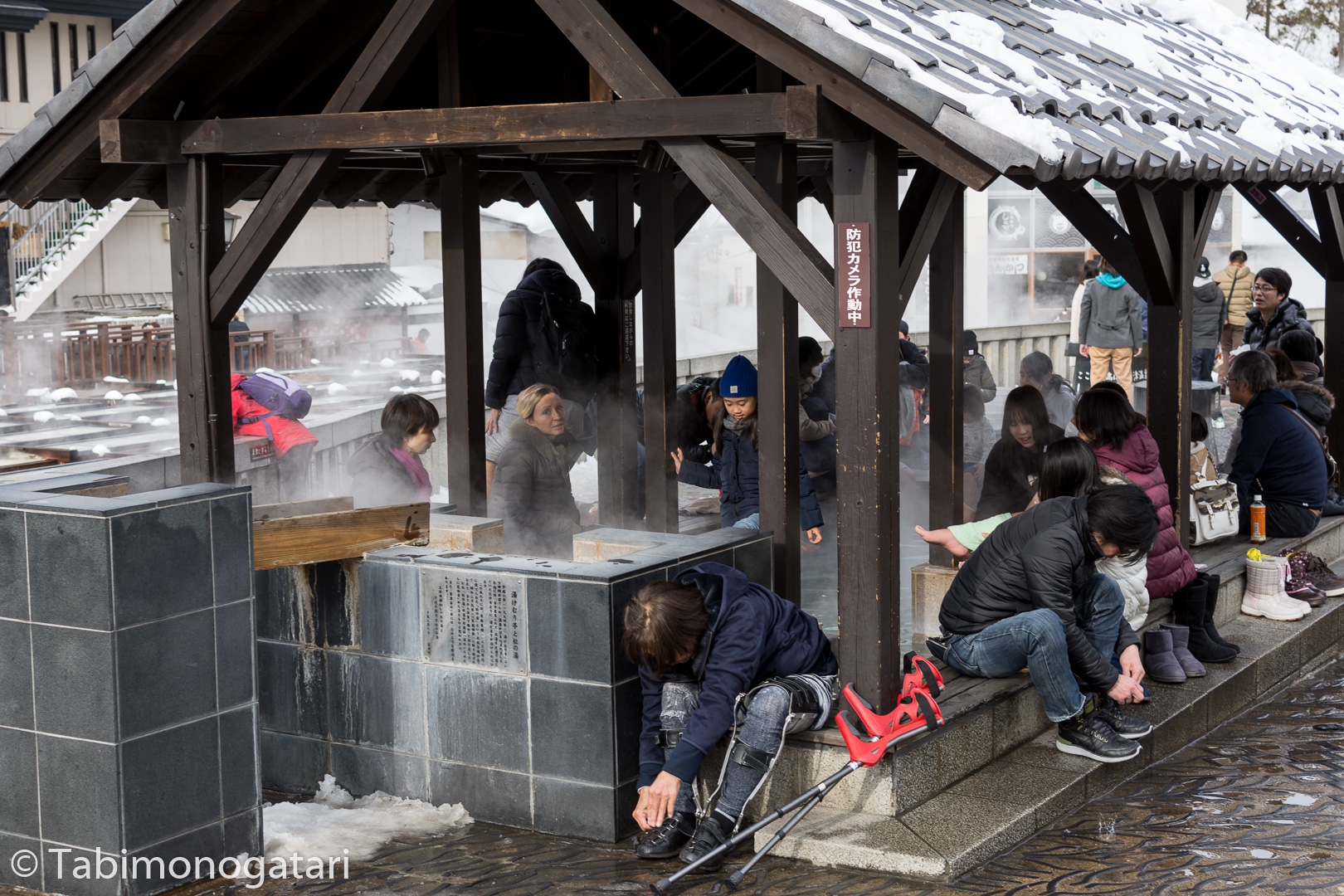
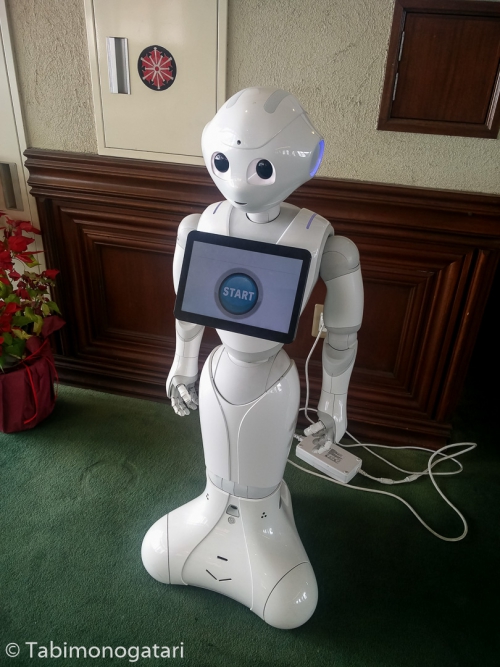
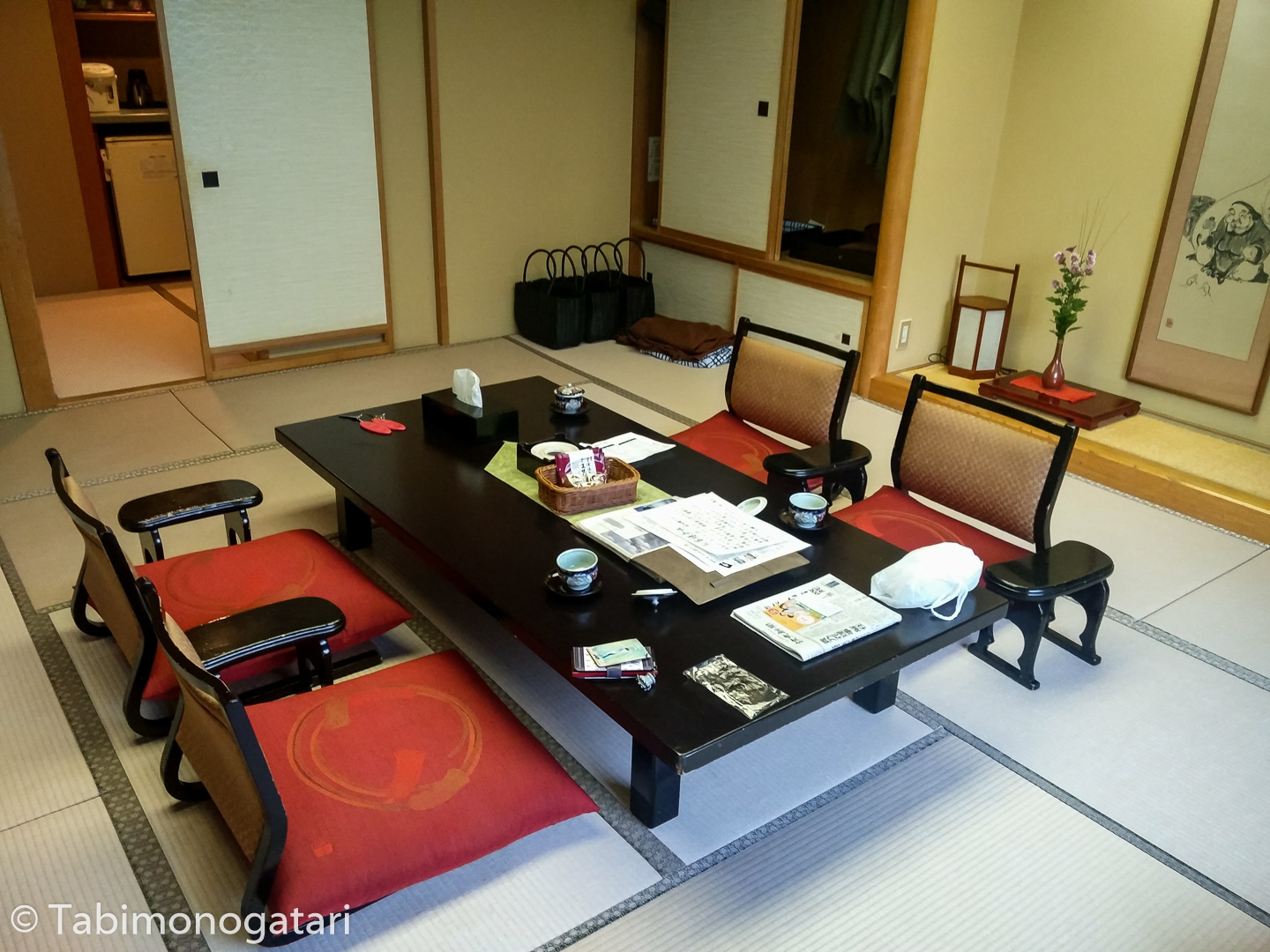
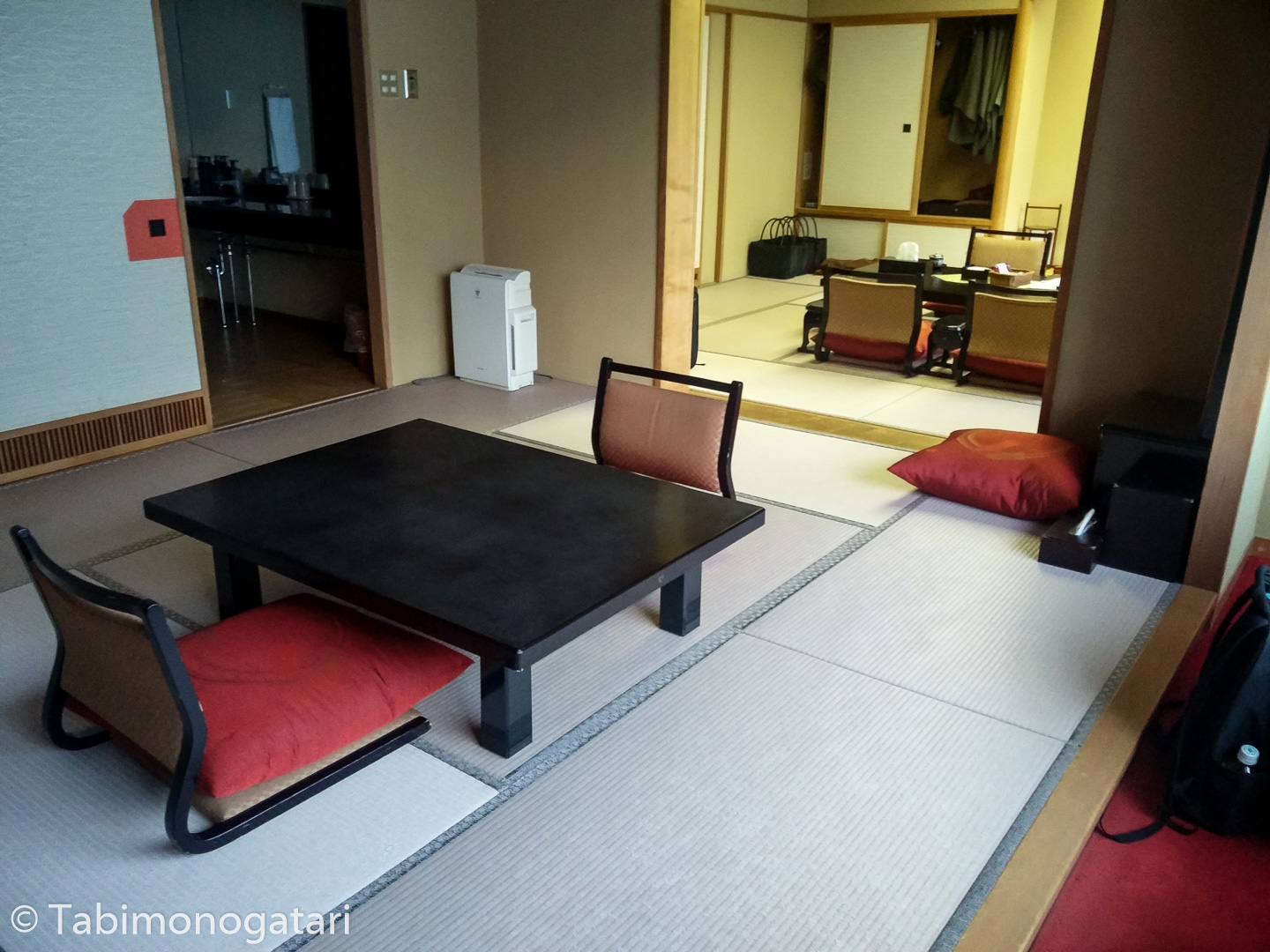
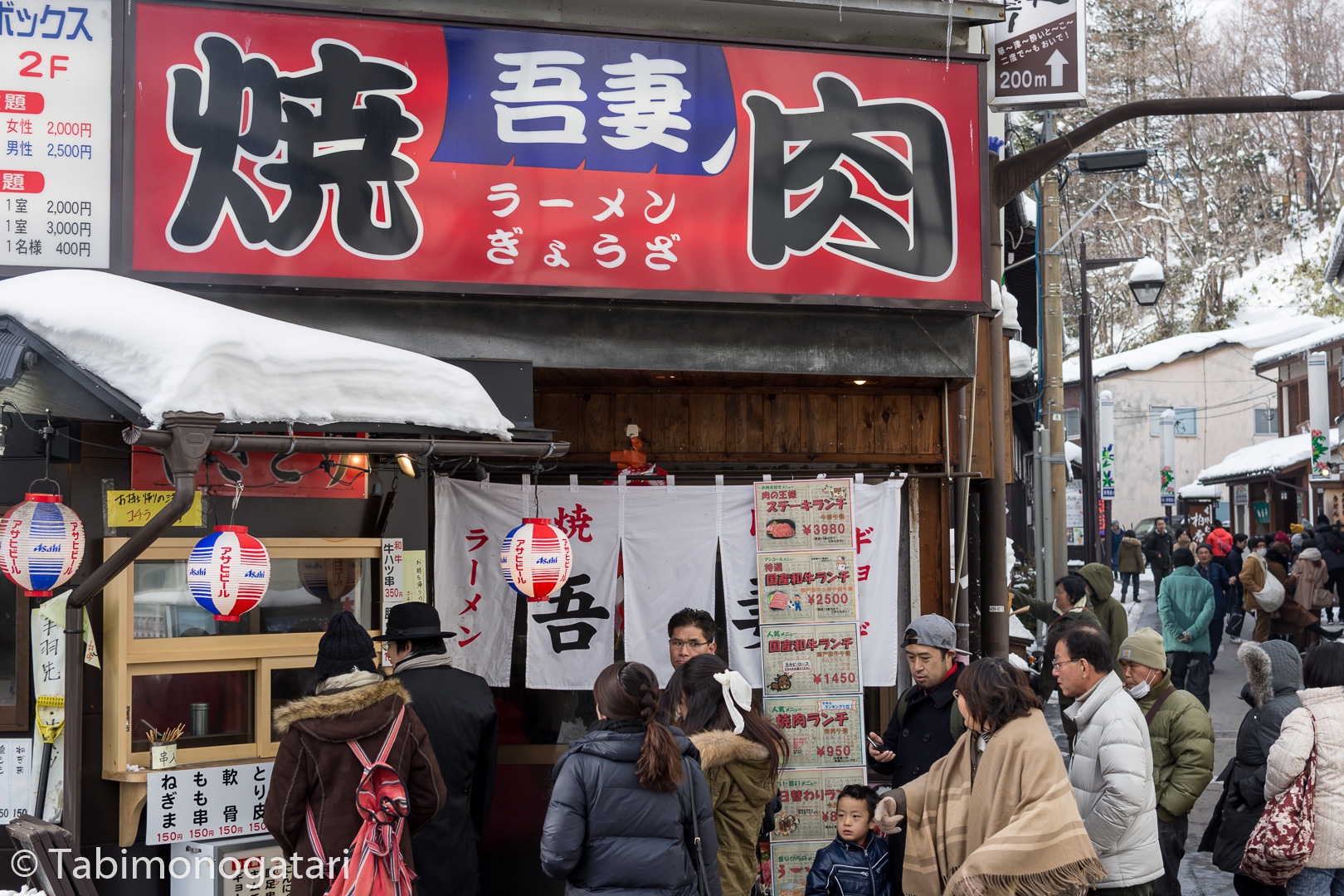
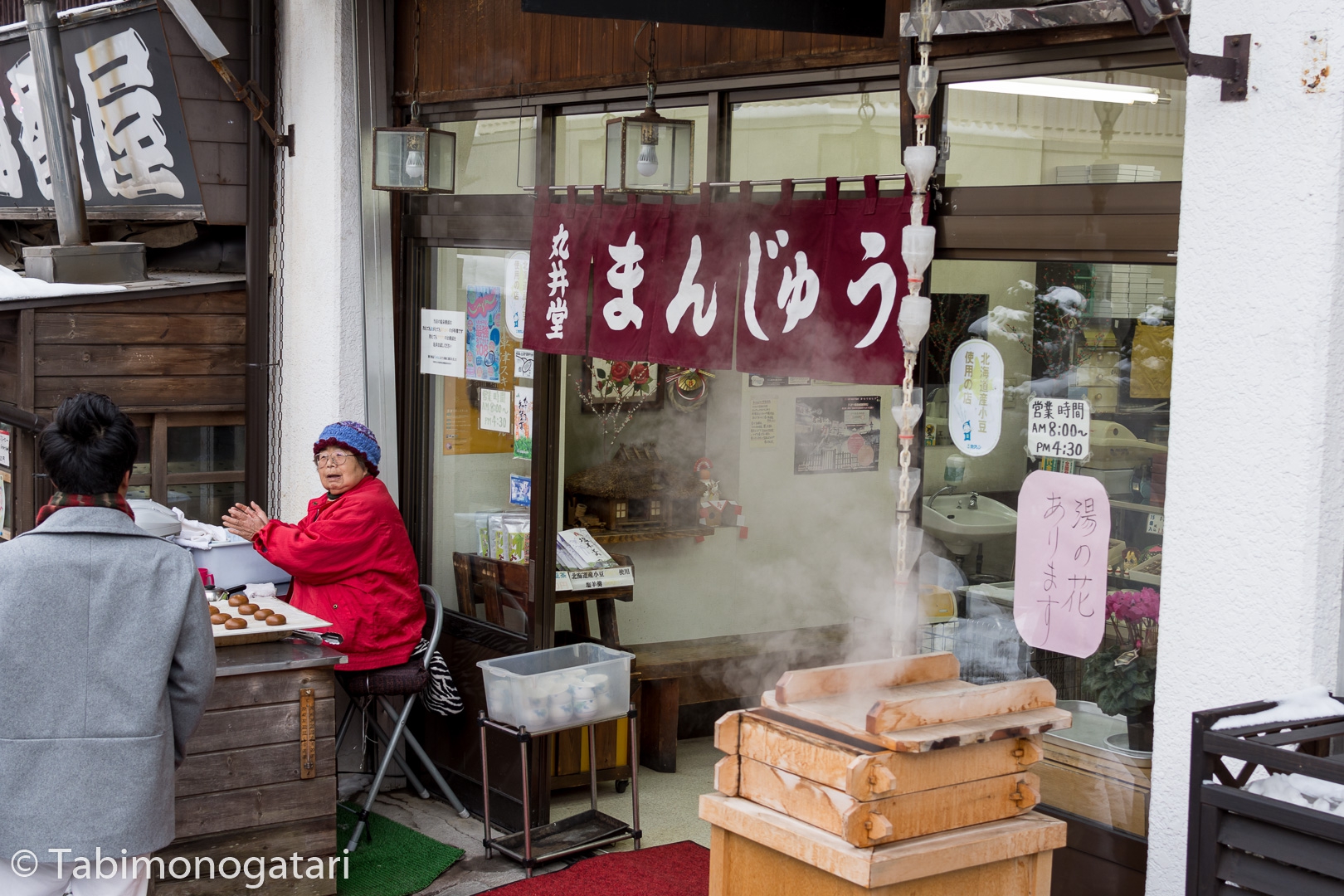
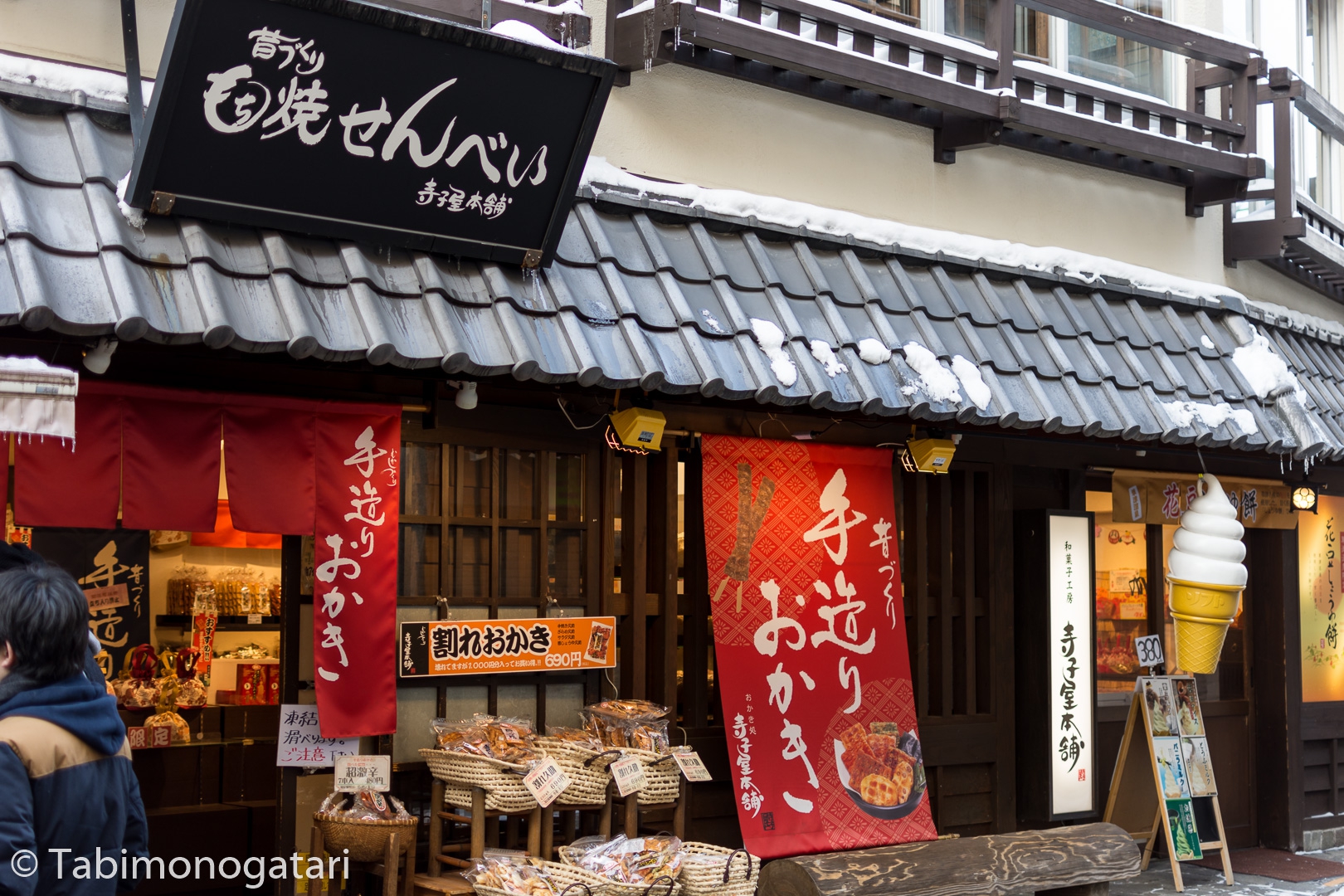
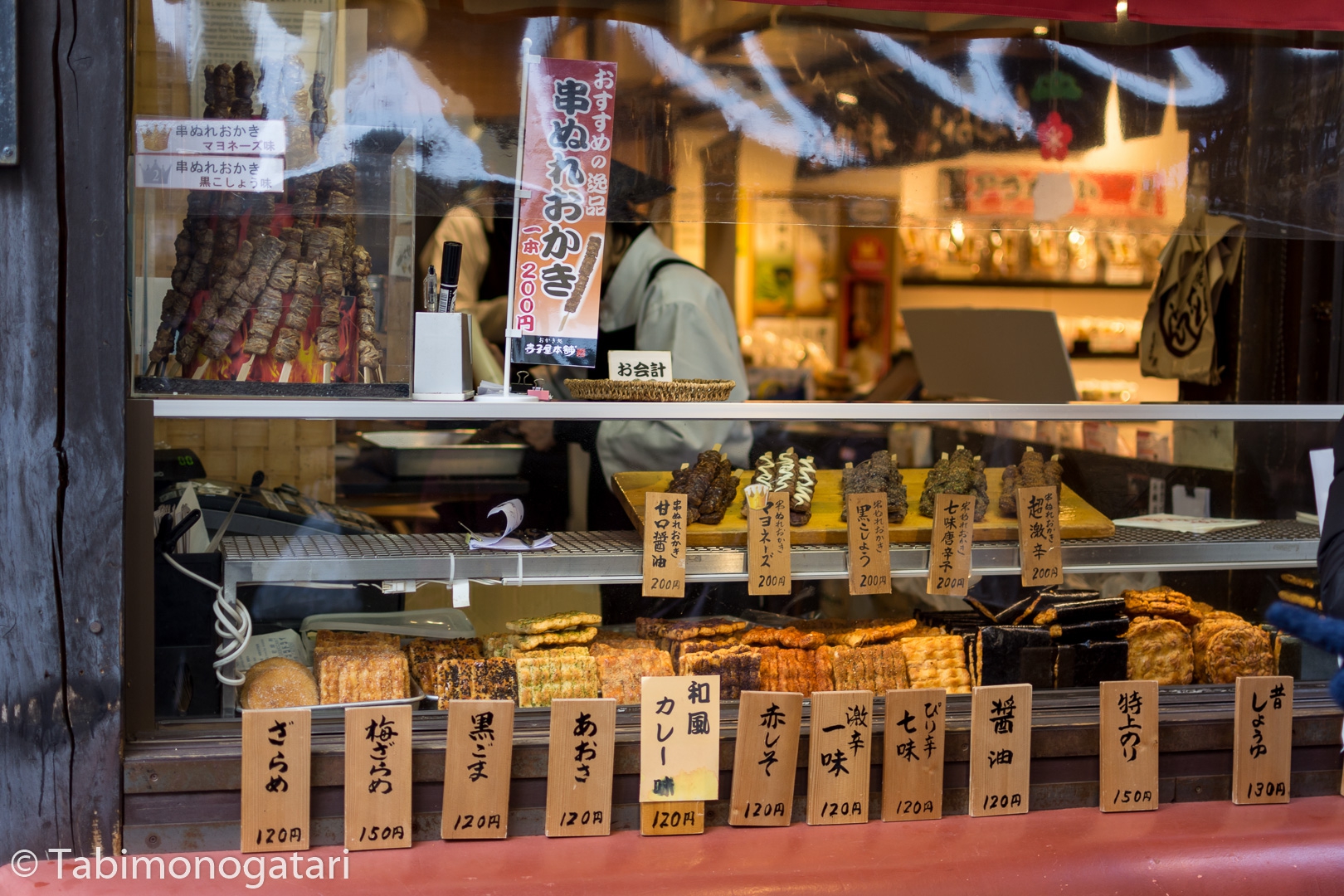
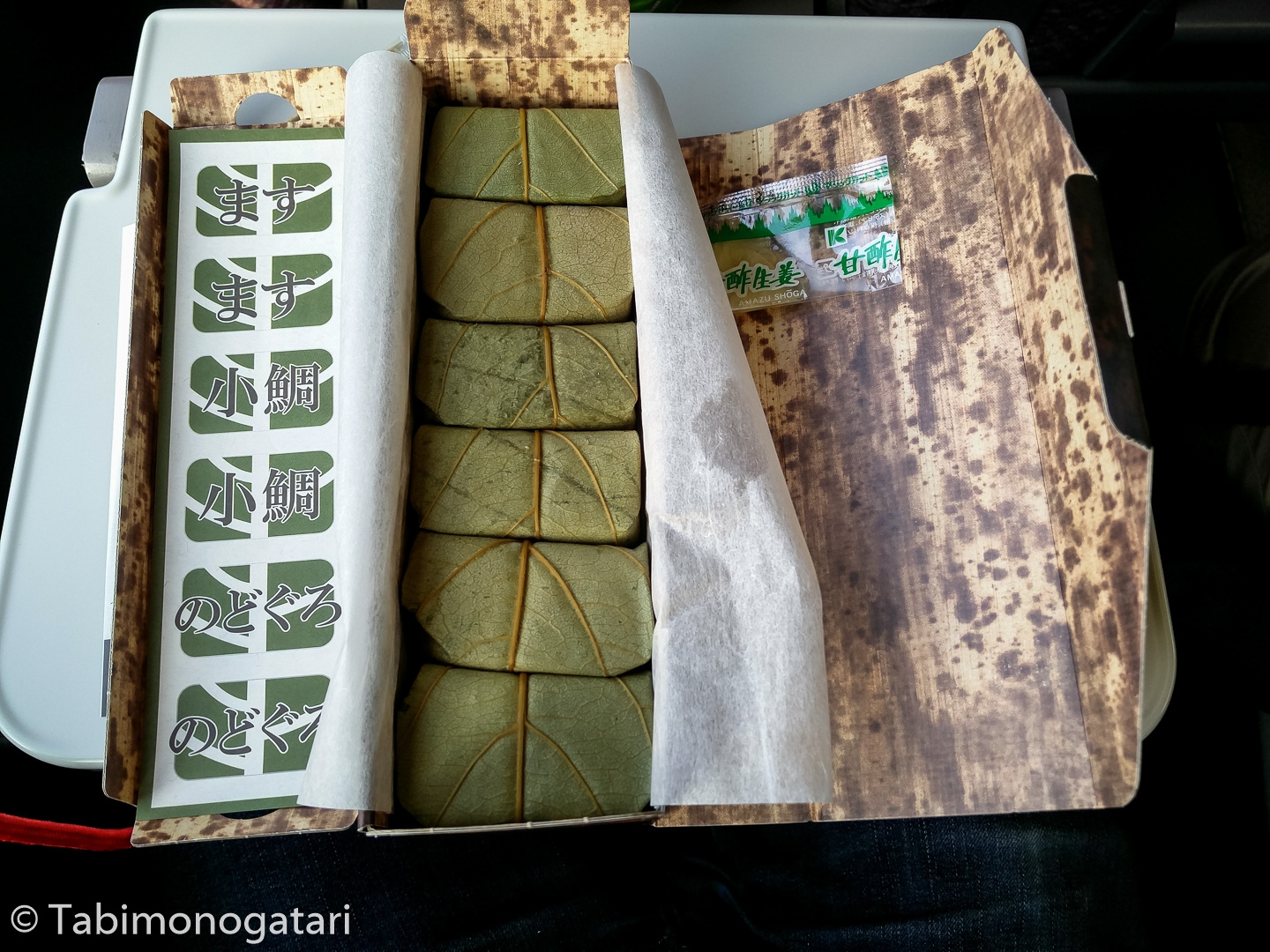
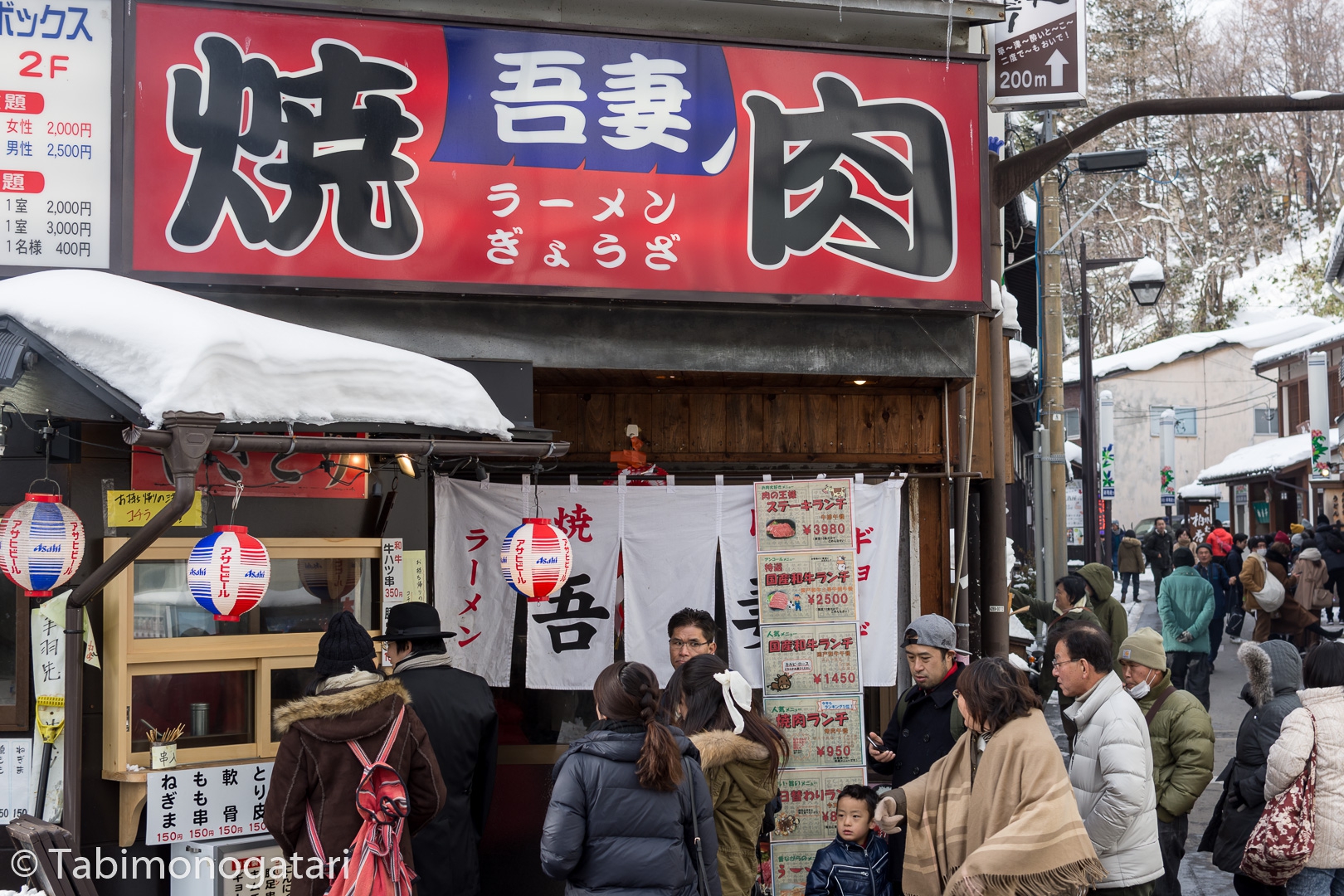
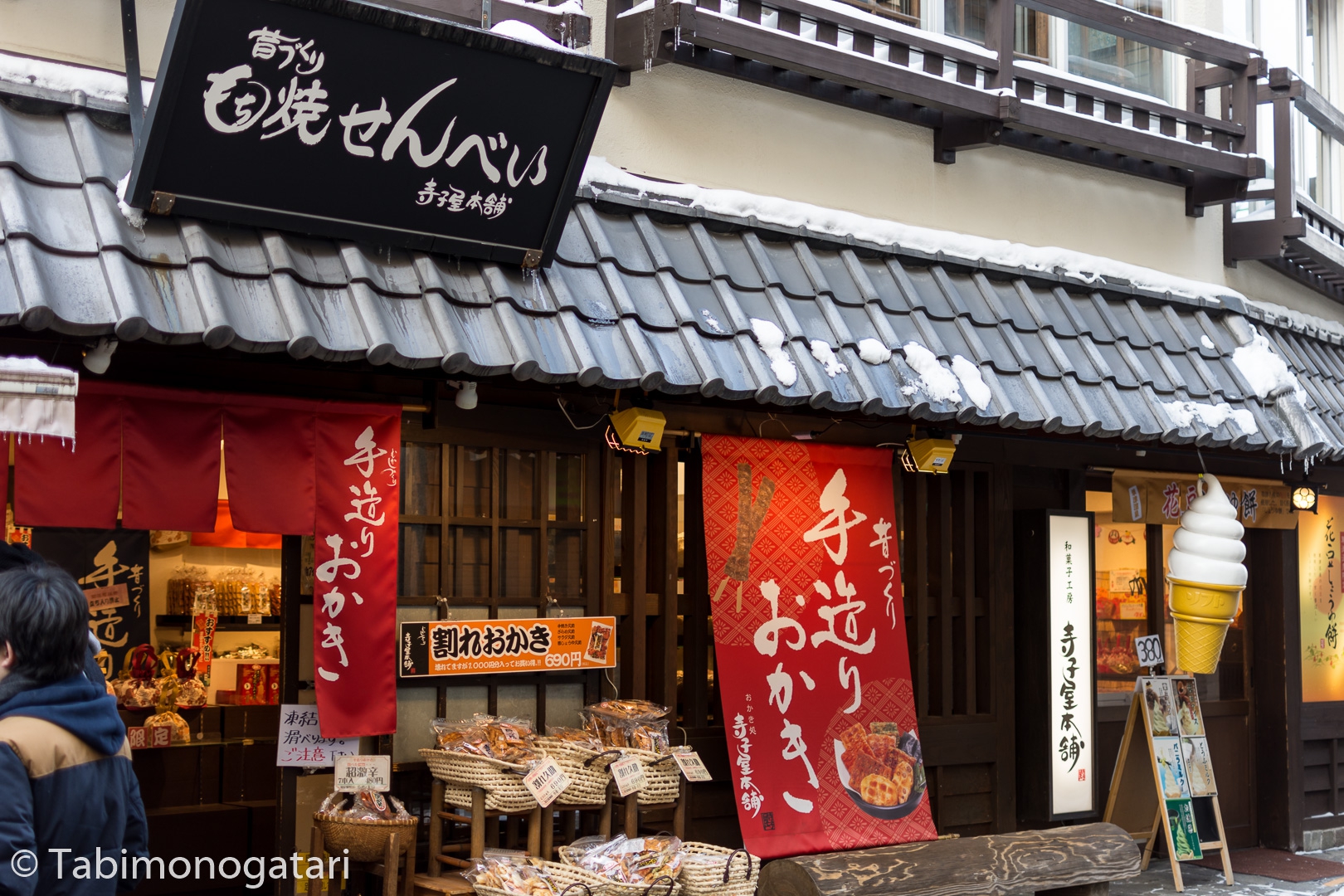
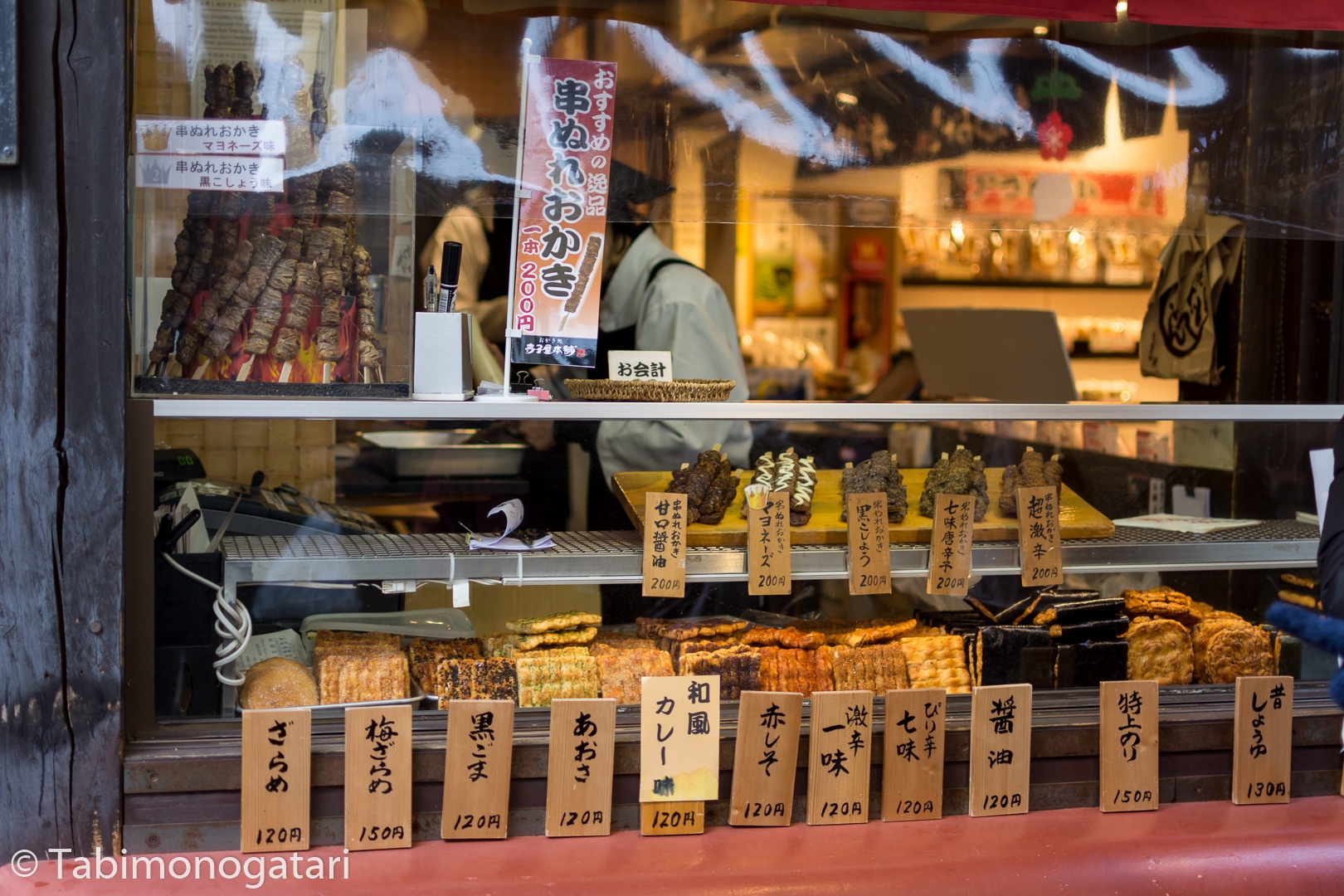
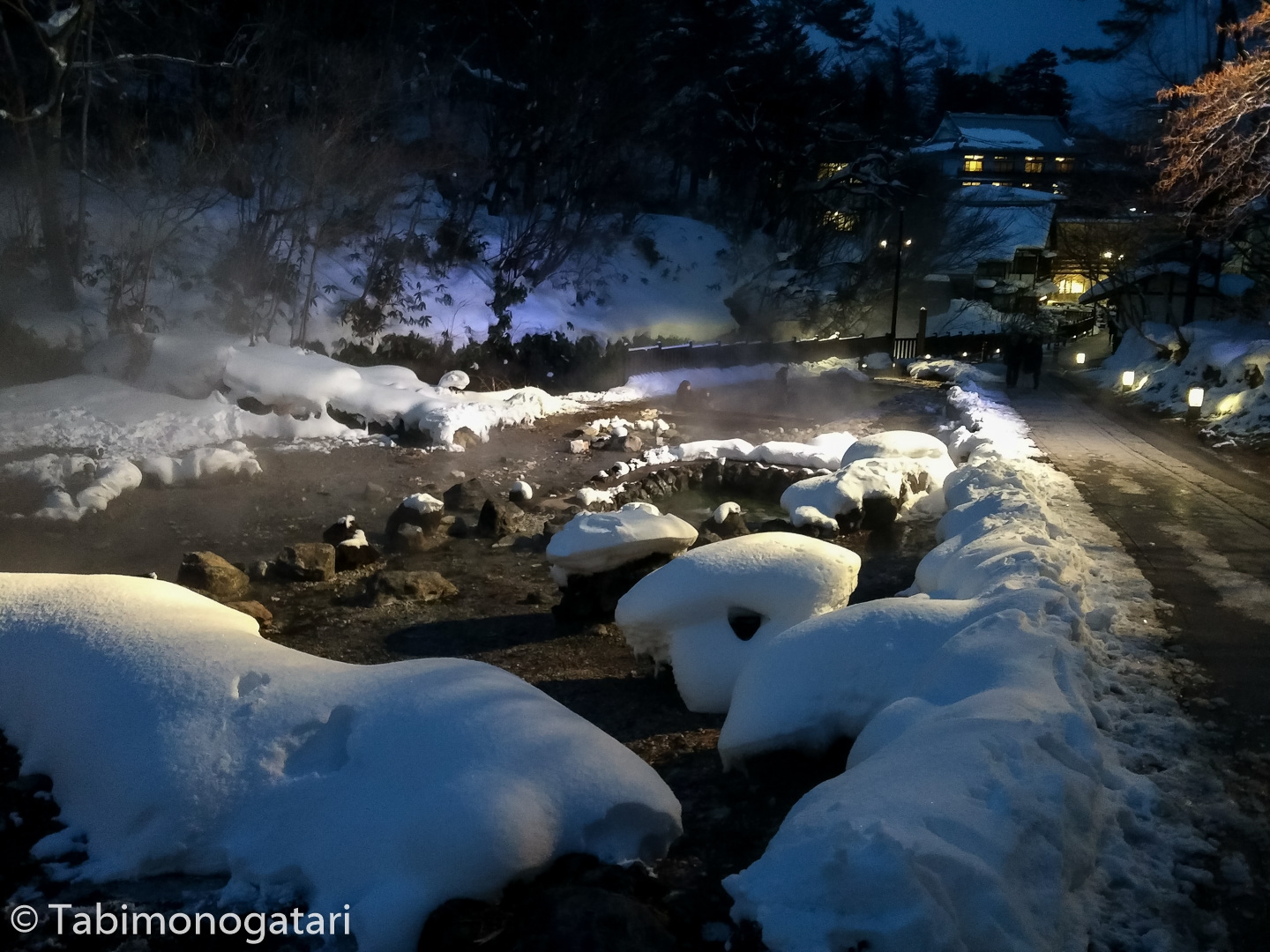
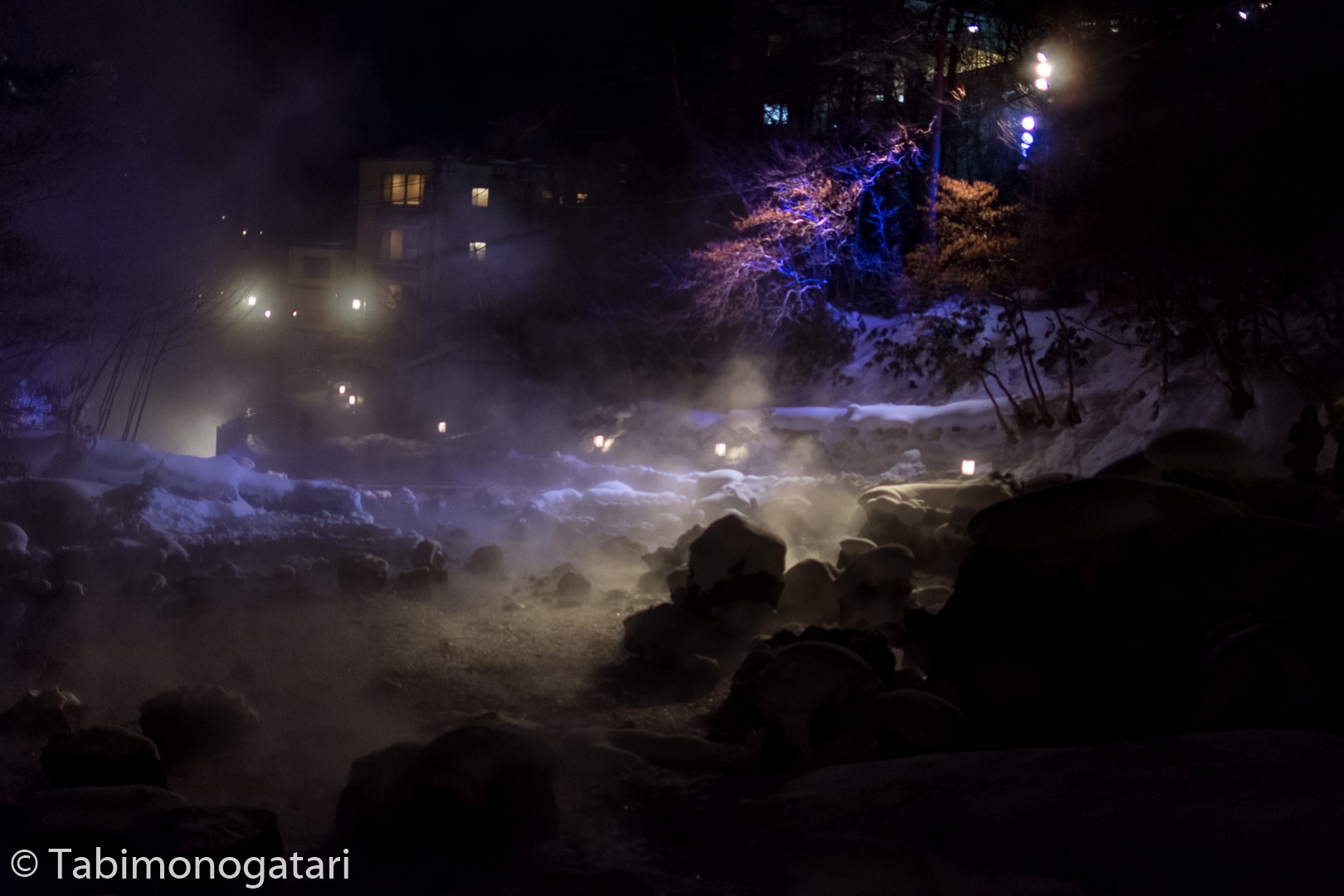
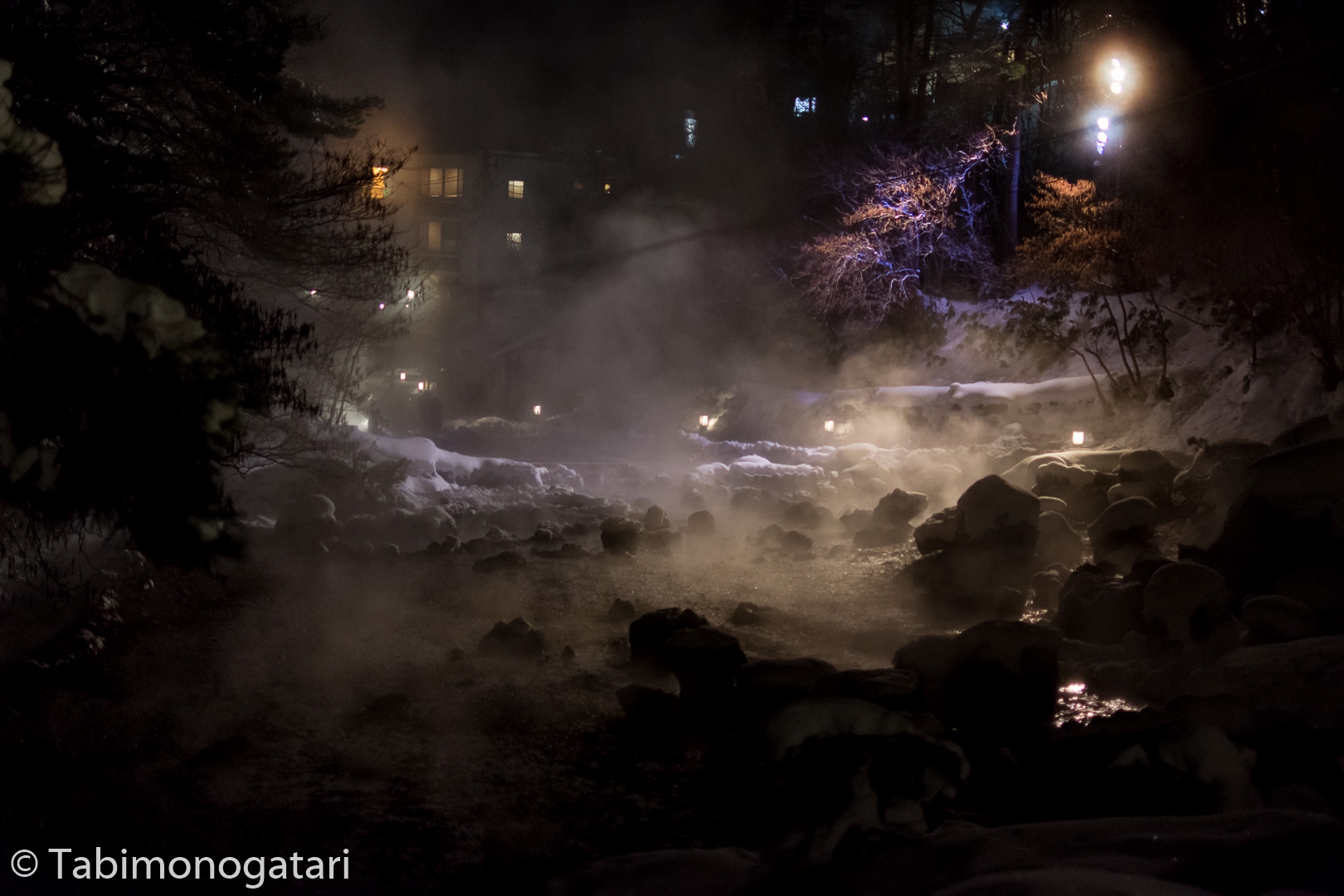
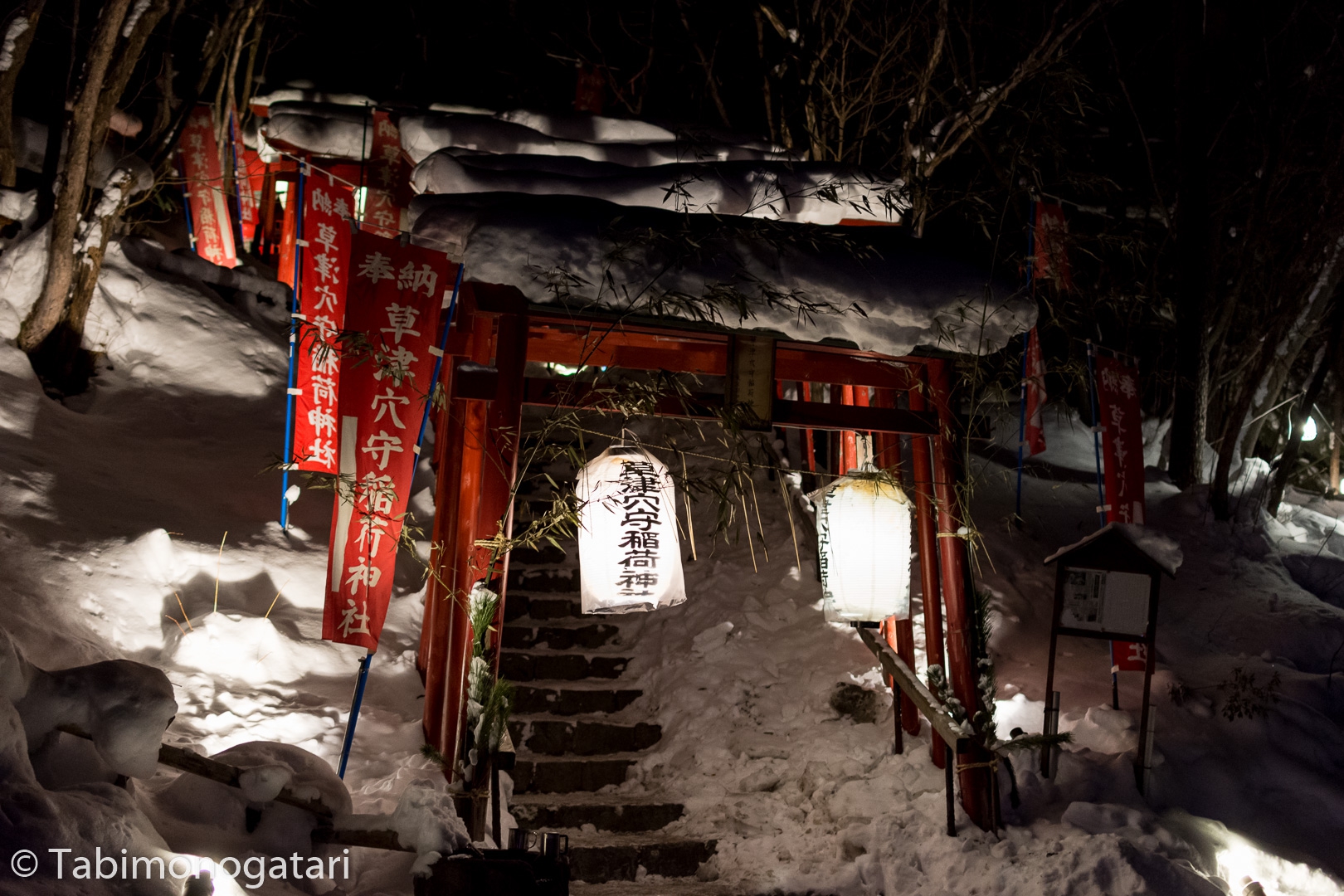
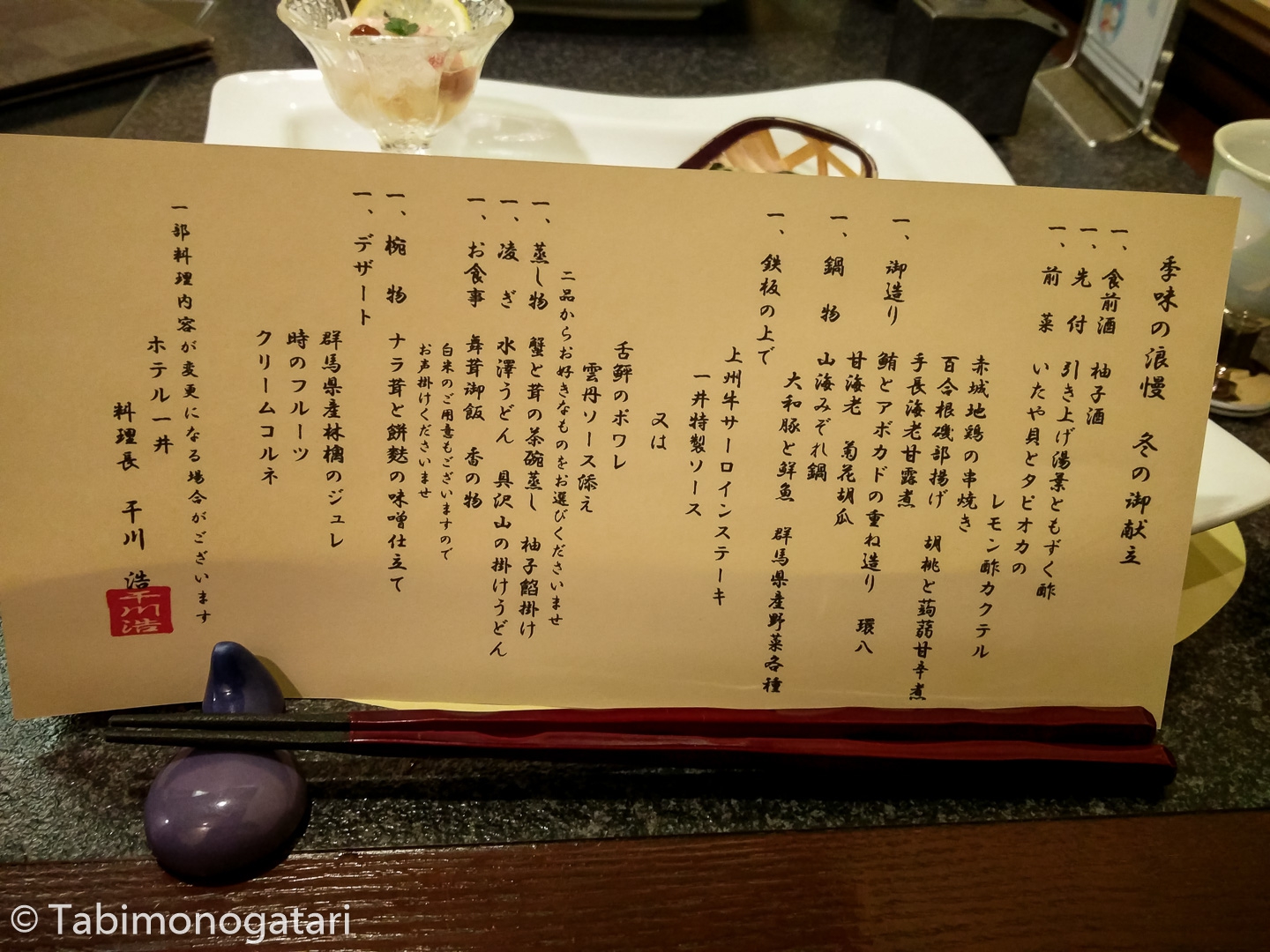
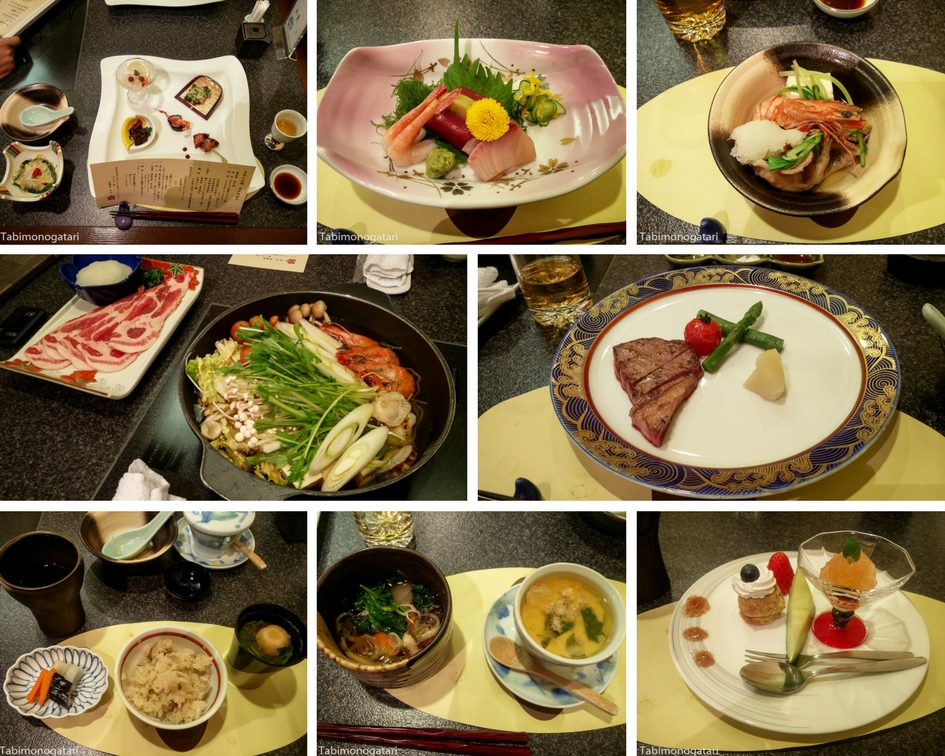
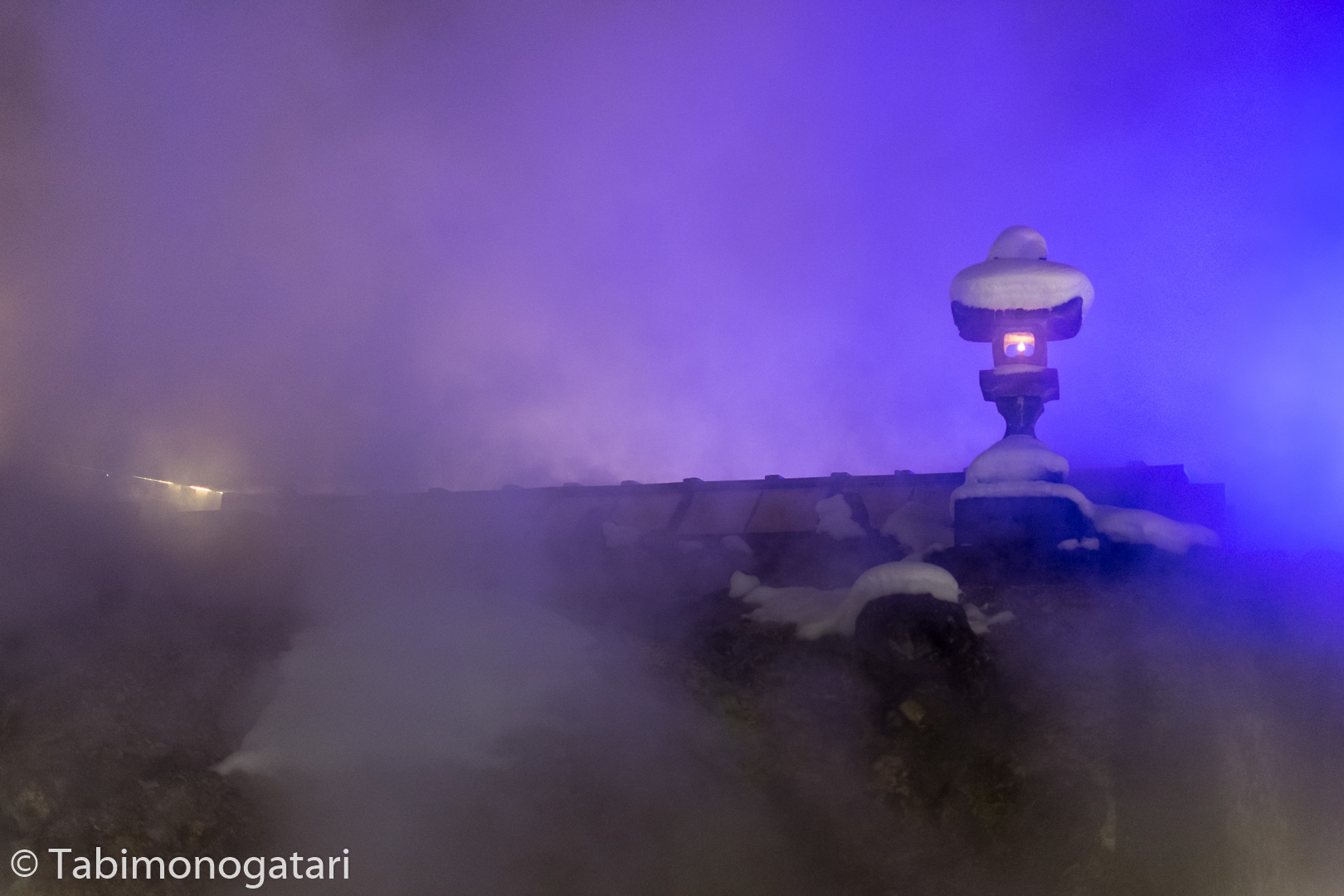
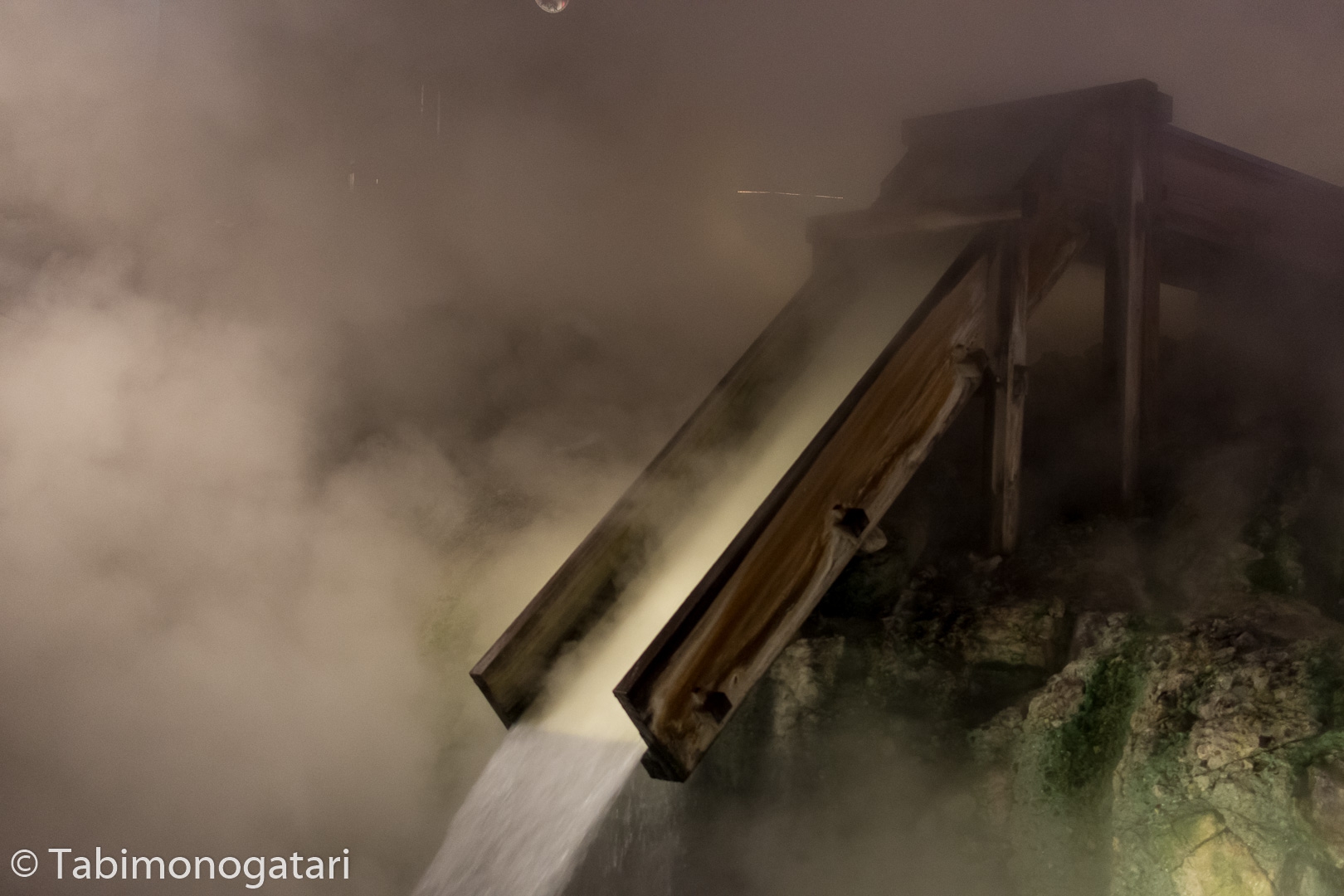
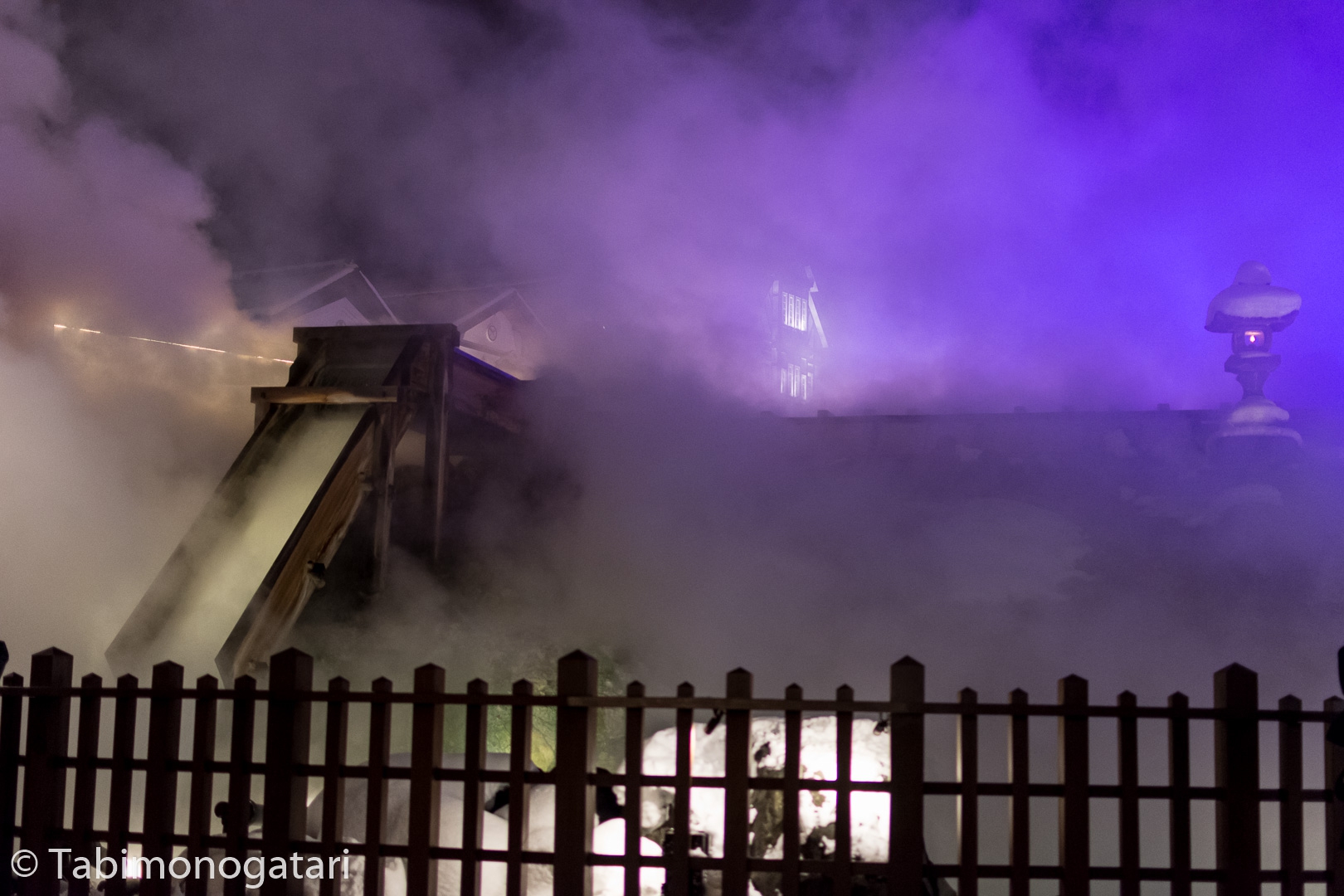
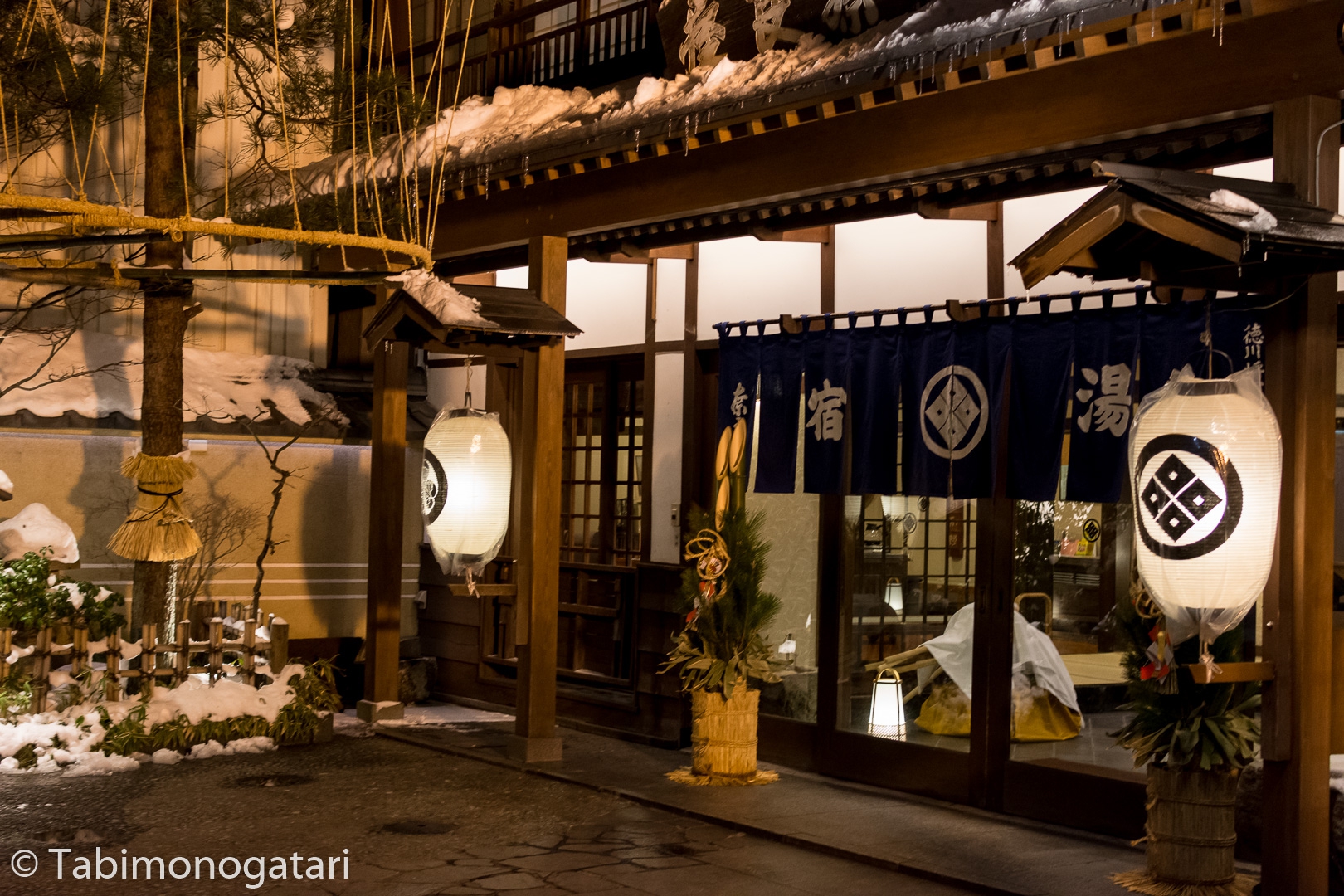
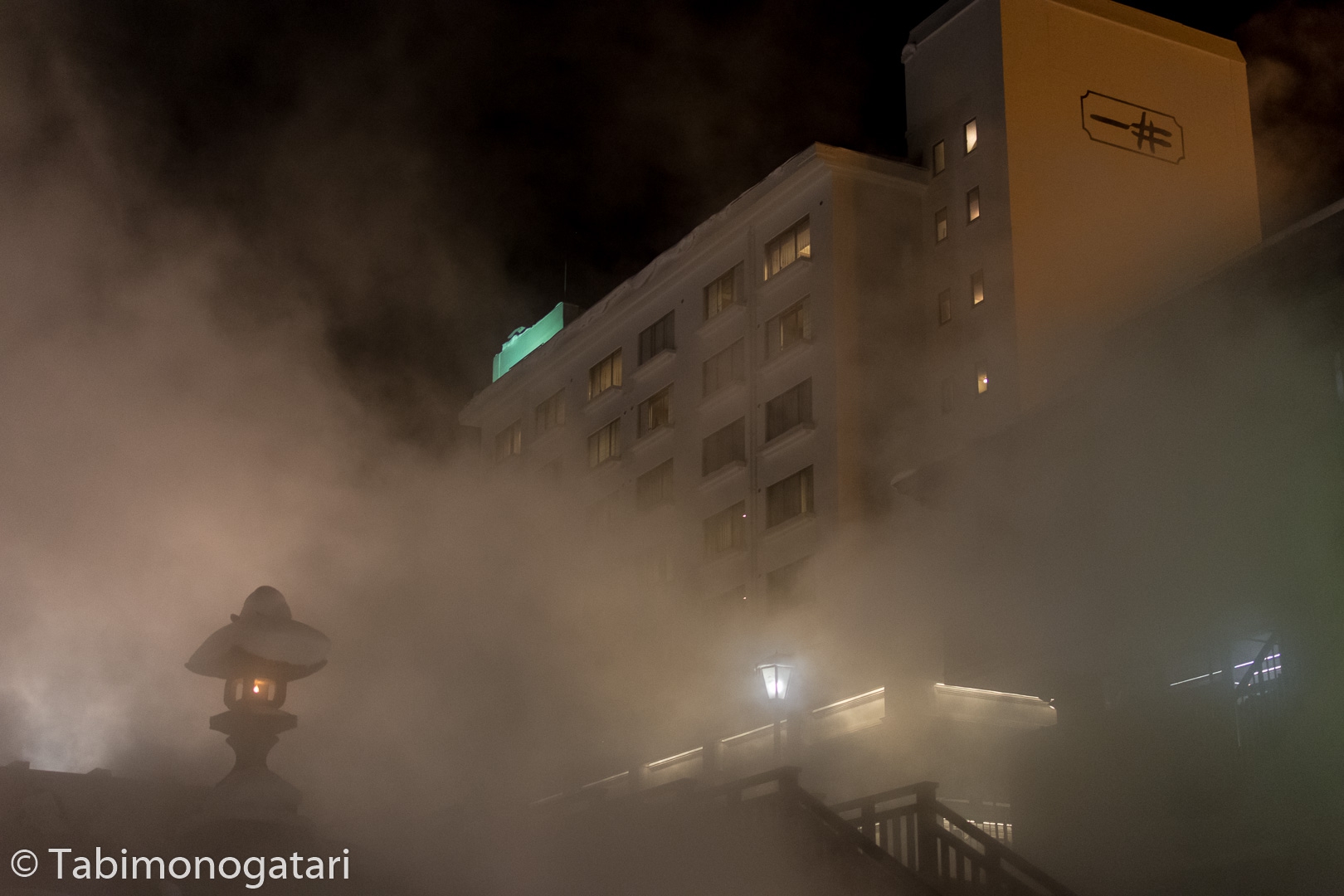
Pingback:Asia 2018 Trip – Tokyo – Tabimonogatari – 旅物語